Read
Edit
History
Notify
Share
BarnBridge
BarnBridge (Founded in January 2019) is a cross-platform fluctuation derivatives protocol. Days prior to its launch, the liquidity pool garnered the interest of yield farmers, bringing over $200 million to the pool. As of October 28th, 2020 the pool has amassed a Total Value Locked (TVL) of over $450 million[1][2][3][4].
Overview
BarnBridge as an idea and whitepaper was originally developed in Q2 2019[5].

On September 10, 2020, BarnBridge announced the close of a $1 million seed round led by Fouth Revolution Capital and ParaFi. Other investors include Kain Warwick (Synthetix), Stani Kulechov (Aave), Andrew Keys (DARMA Capital), Centrality, and Dahret Group. BarnBridge aims to tokenize risk with fixed yield and volatility tranche products. This round of funding is meant to cover the development of BarnBridgeDAO and its core products like the Smart Yield Bond[6].
The Smart Yield Bond is a protocol that mitigates interest rate volatility through debt-based derivatives. Pooled collateral is deposited into various protocols and bundles the yield derived from them into different tranches with different levels of risk exposure. For example, you could buy exposure to a tranche with a lower yield, but less risk and vice versa.
On September 10, 2020, BarnBridge announced the close of a $1 million seed round led by Fouth Revolution Capital and ParaFi. This round of funding is meant to cover the development of BarnBridgeDAO and its core products like the Smart Yield Bond.
On October 18, 2020, the first liquidity mining pool of BarnBridge launched with over $100 million in total value locked. The mining pool that consisted of deposits of USD Coin, DAI, and sUSD began to accumulate millions of dollars before its launch. Under 20 hours after the pool launched, there was $175 million locked in the contract[7][8].
On October 25, 2020, BarnBridge's liquidity pool officially launched and received over $1 million in liquidity an hour after launch. Much of the growth was due to yield farming. Additionally, according to the firm, yield farmers had already staked over $200 million into the pool prior to the pool's official launch. As of October 26, 2020, the pool's TVL sits at over $300 million[5][9][10].
BarnBridge NFT
On October 5, 2020, BarnBridge announced the BarnBridge Non-Fungible Token (NFT), also taking the ticker for $BOND. The BarnBridge Non-Fungible Token is a collaborative created by around 20 artists. $BOND is a contract for 200 fully compliant ERC-721 tokens minted by InfiNFT and viewable on OpenSea. Every $BOND NFT is one of a kind. There may be similar ones in the collection but no 2 are exactly the same[11].
Liquidity Mining Program
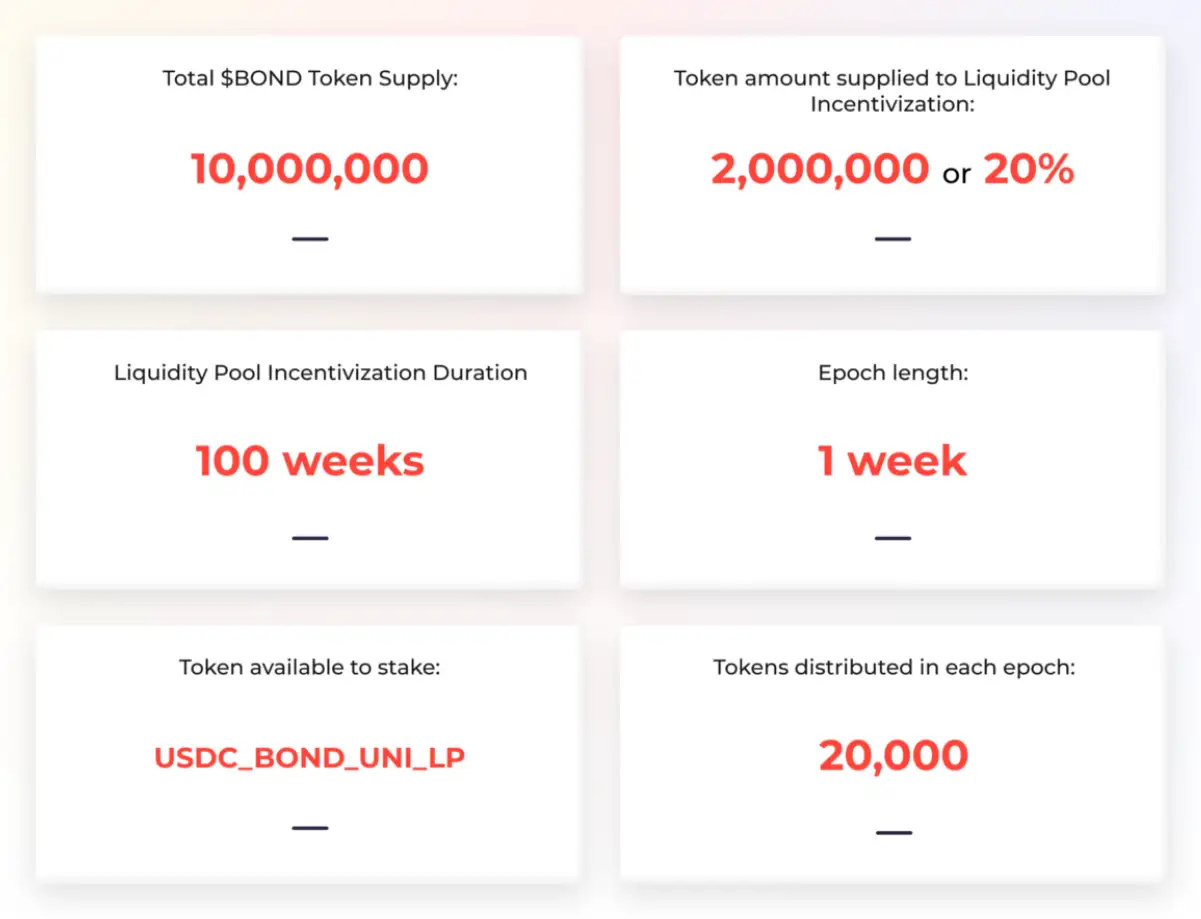
In September 2020, BarnBridge announced a two-phased liquidity mining program. They planned to release two sequential staking contracts with distinct specifications around $BOND token distribution - Yield Farming and Liquidity Pool Incentivization[12].
Yield Farming
Yield Farming staking contract will hold 8% of the total supply and will be distributed to community members who stake DAI, USDC, and sUSD. These three stable coins (DAI, USDC, sUSD) were chosen as they will serve as the initial set of yield-producing assets utilized in BarnBridge's first product, the SMART Yield BOND.
Participants can harvest their yield at the conclusion of each epoch. Each epoch will last 1 week, and an equal number of $BOND tokens will be distributed during each epoch. The participants’ harvest will be based on the number of stable coins they have staked relative to the total amount staked in the pool. Any participant can add to the pool during the duration of an epoch and receive rewards proportional to the time they are staked, but the funds must stay staked through the end of the epoch to be able to harvest the rewards.
Liquidity Pool Incentivization
After the first epoch (1 week) of the Yield Farming program, Liquidity Pool Incentivization starts. The concept behind this initiative is to reward long-term liquidity providers. BarnBridge will be using the uniswapv2 BOND/USDC Liquidity Pool token (USDC_BOND_UNI_LP) as a means to reward liquidity pool providers. The Liquidity Pool Incentivization initiative will run for 100 weeks and each epoch will last 1 week. At the end of the epoch, the user can harvest their $BOND. This initiative will be granted 2,000,000 $BOND tokens and each epoch will have 20,000 $BOND tokens to start.
BarnBridge DAO
The Founders, Seeders, and Advisors employed an Aragon DAO Company Template, which uses transferable tokens to represent ownership stake, starting with Launch DAO. Stake-weighted voting is used to make decisions. The Launch DAO's native token is $BBVOTE. Founders are paid 45 percent, Seeders (45 percent), and Advisors (10 percent). The minimal threshold is set at 62 percent, implying that a plan must receive at least 62 percent approval to pass[13].
BarnBridge DAO
The BarnBridge DAO is governed by the $BOND community. The BarnBridge DAO has complete control over the protocol and all of its features. The BarnBridge uses the Diamond Standard (EIP-2535), which allows users to upgrade the protocol without having all the members remove their tokens and switch to version 2 of the protocol that time arises.
The BarnBridge DAO becomes the core component of the BarnBridge Platform because it can able to make decisions in a decentralized manner that can enforce the best actions for the wellness of the community.
- SMART Yield Bonds: The whole DAO setup is done to solidify the path towards SMART Yield Bonds. This is the first DeFi product of the BarnBridge Platform. The Voting DAO can be able to deploy pools that anyone to join if they want to take advantage of this core mechanic.
- SMART Alpha Bonds: Following the model of the SMART Yield Bonds, the DAO controls the setup and the parameters for SMART Alpha Bonds.
Token - $BOND
BOND is an ERC20 token. It is used to stake in the system, and as a governance token when the governance module is launched. As it conforms to the ERC-20 standard, the $BOND token is tradeable on any exchange and storable on any wallet allowing anyone in the world to access it[14].
Fair Vesting
The vesting schedule is set up in such a way that there isn't a huge cliff looming over users' heads at any moment. The tokens distributed to the Founders, Seed Investors, and Advisors are locked in a smart contract that releases them weekly over the course of two years. The vesting time begins when the Yield Farming method is activated. This breaks down as such
- Total amount of $BOND tokens: 10,000,000
- Percent of $BOND tokens allocated to Founders, Seed Investors, & Advisors: 22%
- Total amount of $BOND tokens vested: 2,200,000
- Length of vesting: 100 weeks
- Release schedule: 1 week
- Amount of $BOND tokens released each week: 22,000
- Percent of $BOND tokens released each week: 0.22%
BarnBridge Governance
BarnBridge DAO lays the foundation for its products. It is governed by BOND ERC-20 tokens. The total supply of BOND tokens is a fixed amount of 10,000,000. There is no mint function in the token smart contract. The BarnBridge staking contract is called Barn, is built on the created by Nick Mudge. The voting on the DAO is performed with the non-tradable vBOND tokens. To get vBOND, users stake or lock their BOND tokens.
- Users lock BOND for a period of up to 1 year and get bonus vBOND.
- The bonus is linear - max 1 year, max 2x multiplier.
- Bonus has a linear decay relative to locking duration.
Direct Deposit: DAO Staking
Staking tokens in the DAO is the simplest way to get started with the BOND token. While the primary goal of staking is for users to gain voting power, on February 8th, 2021, a rewards pool was introduced. It was created as a bonus for DAO participants who signed up early. Users can propose and partake in votes on how to use community resources with voting power.
The DAO pool was preloaded with 610,000 BOND tokens and the duration was set to 50 weeks. The current APR is about 50% but is subject to change.
Providing Liquidity
When it comes to supplying liquidity, BOND offers a plethora of options. A USDC/BOND Uniswap v2 pool is the most liquid and well-incentivized. It went live on October 26th, 2020. The idea of the effort is to reward long-term USDC/BOND pool liquidity providers with more control over the protocol as they continue to put their money into the BarnBridge vision.
To start getting BOND rewards, users need to provide liquidity to the and stake USDC_BOND_UNI_LP tokens in the on BarnBridge.
How to Stake in the DAO
The participant then has the option of leaving their BOND unlocked or locking it for up to a year. One unlocked BOND equals one vBOND voting share, while locking one BOND for a year equals two vBOND voting shares. This bonus decays linearly in relation to the lock's remaining time. If you lock for a year, only 50% of the bonus will remain after 6 months, 25% after 9 months, and your BOND staked and vBOND will be similar after a year.
BarnBridge governance is structured around the BarnBridge DAO which is controlled by the BOND token holders. It has full control over the protocol and the features that are built into it. The $BOND token serves as the system's governance token, giving $BOND holders the ability to vote on platform improvements. BOND acts as a means of aligning the many players in the system by combining governance systems and incentive holders. $BOND is also used to control security and policies. A DeFi protocol's success depends on decentralized, automated governance that incentivizes members and aims for security, sustainability, and participant welfare.
SMART Exposure
BarnBridge is a cross-platform risk management protocol designed to mitigate the dangers of DeFi. BarnBridge's SMART Exposure allows users to use tokenized strategies to passively rebalance between any two assets. SMART Exposure is a non-custodial and convenient way to pursue risk-adjusted strategies with the goal of maintaining a target exposure for an underlying token pair while outperforming static buy-and-hold strategies during volatile market times.
When the prices of tracked assets change, SMART Exposure automatically rebalances, ensuring that target ratios are closely tracked. As a result, users can automate portfolio concentration management with no human interaction.
SMART Exposure allows users to maintain a certain ratio within an underlying ERC-20 token pair while remaining completely passive. For example, if users wishes to follow the value of ETH in relation to Bitcoin, they may set a goal allocation of 50% ETH and 50% wBTC. Similarly, they might enter a 50 percent DPI (Index Coop's DeFi Index token) and 50 percent ETH SMART Exposure position to watch DeFi's relative performance against Ether. Under certain market conditions, SMART Exposure can beat buy-and-hold strategies by providing risk-adjusted retargeting methods in a convenient and non-custodial manner.
This functionality is possible because SMART Exposure maintains its own asset pools. Users are able to deposit the ERC-20 assets they want to balance, select from popular ratios to maintain, and then have them be recalibrated automatically.
SMART Exposure positions are rebalanced after either a time-based or ratio deviation threshold is met. Once the position ratio deviates from its target more than that defined threshold, or the time since the last rebalance exceeds the defined rebalancing frequency, a rebalance is triggered by keeper bots. Rebalancing gas costs are covered from the underlying pooled collateral which makes it much cheaper compared to individual rebalance transactions. Thresholds can be set for every SMART Exposure pool through DAO vote. In our internal back testing, values between 5–10% deviation performed best.
SMART Exposure Tokens
Passively managed: Fully automatic risk rebalancing, no need for manual or time-consuming risk monitoring and adjustment.
Composable: Exposure Tokens are fungible ERC-20 tokens that can be used as collateral or linked with other protocols and services.
Convenient: The use of strategy tokens enables rapid deposit, exchange, and redemption.
Lower gas costs : Gas fees for rebalancing will be split between all liquidity providers
Efficient and predictable : Powered by Chainlink price feed oracles and backed by BarnBridge liquidity pools
Exposure Tokens (eTokens)
For any token pair, SMART Exposure can handle up to 5 distinct ratios (or "tranches"). Each exposure ratio is represented by a fungible ERC-20 token, which makes it simple to switch between strategies, purchase and sell it on secondary markets, and use it as collateral in other protocols. Exposure tokens have their own tickers. For example, the exposure token for the wBTC 50%, ETH 50% is called bb_ET_ETH50/WBTC50, where:
- bb - BarnBridge
- ET - exposure token
- ETH50/WBTC50 — ETH 50%, wBTC 50%
When users deposit the underlying tokens into the pool, they are given eTokens to mark their positions. The deposited funds can be used to fund one or both of the underlying assets. The underlying assets in the SMART Exposure pools can then be redeemed for the exposure tokens on secondary marketplaces. Users can also trade their eTokens between pools for varying exposure ratios.
Using SMART Exposure
Multi-asset HODLers can use SMART Exposure tokens to passively diversify their holdings and manage unpredictable crypto markets.
AMM Pools
Larger alpha: When compared to AMMs, SMART exposure's rebalancing technique generates higher excess returns. Continuous rebalancing of AMMs underperforms for volatility harvesting, especially when fee income is not taken into consideration.
Open Market Operation-Based Portfolio Managers
Automated:** BarnBridge keeper network takes care of the rebalancing without the need for additional coordination (phases), market makers, dutch auctions, etc
Higher liquidity for different exposures ratios of the same token pair as they tap into the same liquidity pool.
Fixed allocation strategies and effective treasury management are better served by SMART Exposure since it is:
- Passive Management: Fully automated rebalancing removes the need for manual monitoring and adjusting of position risk.
- Convenient: Adjusting risk exposure for any asset pair is as straightforward as just buying/selling your ERC-20 exposure token.
- Efficient: Rebalancing strategies are executed predictably and with minimal slippage.
- Potentially Tax Optimized: In jurisdictions that tax in kind crypto transactions, SMART Exposure may remove the tax implications associated with rebalancing on your own.
- Composable: As eTokens are fungible ERC-20 tokens they can be easily integrated into other protocols and services, or even be used as collateral
SMART Alpha
Users can take either a senior or junior position on a certain ERC-20-compatible asset in SMART Alpha pools (e.g., ETH, wBTC, UNI).
- When prices fall, juniors owe a portion of their underlying assets to the senior pool, but when prices rise, juniors receive more of the underlying.
- In exchange for partial exposure to upward moves, seniors receive entire price protection up to a particular threshold.
Positions in both the junior and senior pools are represented by ERC-20 proofs of liquidity (e.g., senETH, junETH).
How to Use SMART Alpha
Senior rates are calculated as a function of junior-side pool dominance in the current version of SMART Alpha. The greatest amount of downside price movement the underlying asset can experience in a week before senior depositors suffer dollar-denominated losses is known as the senior rate.
Junior dominance is defined as the share of a given ERC-20 token’s pool that is comprised of junior depositors. There are two things to note under the current SMART Alpha model:
- 80 percent of junior pool dominance is used to compute the senior rate.
- For any particular period, the senior rate is set at 35% downside protection.
SMART Alphs is perfectly fits for
- Treasuries Project: SMART Alpha seniors give downside price protection while subsidizing leverage for ardent users for project teams and DAOs with big holdings of their original asset.
- Borrowers with Collateralized Loans: Senior positions with adequate secondary liquidity may be a source of low-volatility collateral in DeFi lending markets.
- DeFi Traders: Junior positions offer a distinct type of leverage than other DeFi solutions, and it may be the only form of leverage available for a longer tail of assets.
How to buy BarnBridge
- Open an account on an exchange that supports BOND.
- Deposit funds into your account.
Fund account with a bank transfer, pay with a credit or debit card, or deposit cryptocurrency from a crypto wallet to buy BarnBridge.
- Buy BarnBridge
Complete BarnBridge purchase and then find the best wallet to store BOND
How to sell BarnBridge
- Sign in to the exchange that has BOND on. (If users store their BarnBridge in a digital wallet, compare crypto exchanges to sell it on)
- Place a sell order. (Choose the amount of BOND to sell)
- Complete your transaction (Confirm the selling price and fees and close sale of BarnBridge)
Pool 1 & Pool 2
BarnBridge's two pools have their own distinct features that greatly set them apart. Pool 2, which was rolled out shortly after Pool 1, contains more safety measures, as the need for security is crucial for un-audited smart contracts like these. Pool 2 is a Uniswap pool, making it more secure and safe. Pool 1 was built from scratch by the firm.
USDC/BOND LP pool
On October 26th, 2020, the USDC/BOND liquidity pool incentivization scheme was begun. The idea of the effort is to reward long-term liquidity providers in the Uniswap USDC/BOND pool with increasing control over the protocol as they continue to demonstrate their support for the BarnBridge goal.
To stake in the pool users need to complete two steps:
- Provide liquidity in both USDC & BOND to the and get LP tokens.
- Stake those LP tokens in the.
BOND hodl pool
On November 16th, 2020, BOND Hodl Pool was launched. It lasted 12 epochs (weeks) and gave out 60,000 BOND tokens to users as a reward. On February 8th, 2021, the BOND Hodl Pool came to an end. Users who have not yet claimed their prizes can do so by going to the pool page in the app.
DAO staking pool
On February 8th, 2021, the DAO Staking Pool was launched. It was created as a bonus for DAO participants who signed up early. Users earn incentives from the DAO rewards pool in addition to voting power. 610,000 BOND tokens were put into the pool, which should be dispersed within 50 weeks.
The major difference between the two designs is the higher chances of impermanent losses. Meaning, by using Uniswap, a users APY earning from the pool can more easily outweigh the bigger losses caused by volatility 'during price discovery.' Discussing the difference in risk in a Medium post by the firm, they explain,
Joining pool 2 is far more speculative than joining pool 1. It’s like poker — there are pros in pool 2 just like there are card sharks in casinos[15].
Team
- Troy Murray - Co-founder[16]
Troy is the founder of RUDE labs, a crypto-focused artist collective. Since 2012, when he was bitten by the Bitcoin bug and has been going down the rabbit hole ever since, Troy has been studying the various benefits that Blockchain can bring to media and artists. Troy has spent the majority of his time working in and around the cryptocurrency field, with an emphasis on Ethereum-based initiatives. Prior to this, I worked on SingularDTV/Breaker and snglsDAO, both of which attempted to decentralize media and entertainment. In 2016, he was working on a Title III equity crowd fundraising platform with Ethereum coins.
- Tyler Ward - Co-founder
Tyler is the CEO of Proof Systems, one of the top marketing and UI/UX firms focused on digital assets. Tyler has worked with companies like as ConsenSys, Earn.com (which was acquired by Coinbase), FOAM, Dether, and Grid+, as well as Centrality, Sylo (a decentralized messaging dApp with 300k members in New Zealand), NEAR Protocol, DARMA Capital, SingularDTV, and the snglsDAO. He began working with cryptocurrency in late 2016 and has since purchased and sold a number of e-commerce businesses.
- Milad Mostavi - Software Architect
Milad is the co-founder and CEO of DigitalMOB. He is a seasoned software architect who has worked with ConsenSys on a dozen distinct projects over the last five years. He was instrumental in the successful launch of SingularDTV and Gnosis, as well as orchestrating the growth of SingularDTV's entertainment decentralized ecosystem.
- Dragos Rizescu - Full Stack Developer
At Digital MOB, Dragos is in charge of product development. He has a full stack programming background and a penchant for creating highly scalable user interfaces. Dragos has been at the forefront of web3 technology for the past five years. He co-founded Treum.io, a blockchain supply chain solution that provides high-value physical assets with transparency, traceability, and tradability. He was a member of the core team that launched Gnosis and SingularDTV as a developer, and he has advised and supported a number of projects in the ecosystem, most notably Alethio.
- Bogdan Gheorghe
Bogdan considers himself a DeFi nerd; having a background in mathematics and data science, he has spent the past two years at Alethio performing statistical analysis on blockchain data, as well as using and researching nearly all DeFi protocols in order to give the Alethio product suite a DeFi flavor. He was in touch with all of the key protocol teams because he worked on development and sales for the Codefi DeFi data API. He is now a member of Digital MOB, where he is in charge of developing DeFi products as a product owner.
Advisors/Technology Partners
- Aaron McDonald - Co-Founder and CEO, Centrality
Aaron is a 20-year IT industry veteran with experience leading teams across all parts of a technology company, including managing $1 billion in portfolios. Aaron co-founded Centrality, a $100 million global venture studio that supports a portfolio of ventures that use decentralized technology to create new market innovation and customer experiences. Aaron serves on the boards of directors or serves as an advisor to more than a dozen venture capital firms throughout the world. Aaron was named EY Entrepreneur of the Year in the category of technology and emerging industries in 2018.
- Atpar - the company behind ACTUS protocol
the firm behind the ACTUS protocol, whose mission is to give the Ethereum community and the TradFi world the tools they need to realize their vision of an open, interoperable, and frictionless financial ecosystem. The Algorithmic Contract Forms Unified Standard (ACTUS), which is a formal representation of all types of financial contract types in terms of their financial commitments, is at the heart of the ACTUS Protocol.
Partnerships
BarnBridge has partners with UMA to offer 'SMART' Alpha KPI Options. The BarnBridge DAO has approved up to 10,000 BOND for a test liquidity mining campaign utilizing UMA Protocol. This liquidity mining program will be used to bootstrap secondary liquidity for SMART Alpha junior and senior positions on the Ethereum mainnet in the ETH (USD) and BTC (USD) pools[17].
KPI Options
By replacing the native asset as the reward for liquidity mining participants, KPI (Key Performance Indicator) options address both of these dilemmas. Instead, users are given tokens that entitle them to a pro rata share of the native asset held in an escrow contract at the end of the contract's term.
Across DeFi, liquidity mining has proven to be an effective strategy for unleashing flywheels. Positive risk taking is subsidized by rewarding early users with upside in the form of a project's native asset, resulting in a higher probability for network effects to take root.
Synthetic tokens with Key Performance Indicator (KPI) choices pay out additional rewards if a project's KPI meets predetermined criteria before an expiration date. Because their option is worth more, every KPI option holder has an incentive to increase that KPI. This is done to align the interests of individual token holders with the protocol's overall goals.
Roadmap
2019
BarnBridge idea was Born
2020
- $1M Seed Round closed
- LaunchDAO launched
2020 (September)
The Smart Contract Development work started
2020 (October)
- Staking Contracts Released
- The BarnBridge BOND Token Release
2020 (November)
- BOND for BOND Staking Contracts Released
- BarnBridgeDAO was Announced
2020 (December)
The DAO Audits
2021 (January)
BarnBridge DAO , Final touches and audits on the DAO , and DAO launches (EOM)
2021 (February)
SMART Yield , Finalize & audit SMART Yield , OpenZeppelin Audit , and Hacken Audit
2021 (March)
- The SMART Yield Launch
- Junior Token Incentive Program launches
2021 (May)
- The introduction of SMART Exposure
- Audit SMART Exposure
2021 (July)
- SMART Exposure Launch
- The SMART Exposure & SMART YieldLaunch on Polygon
2021 (September)
- SMART Alpha Launch
BarnBridge
Commit Info
Edited By
Edited On
July 28, 2022
Feedback
Average Rating
How was your experience?
Give this wiki a quick rating to let us know!
Twitter Timeline
Loading
Media
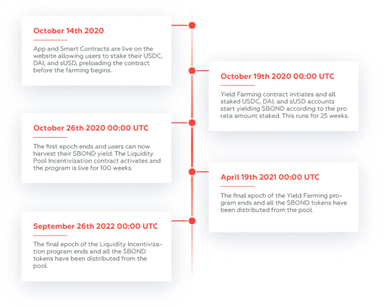


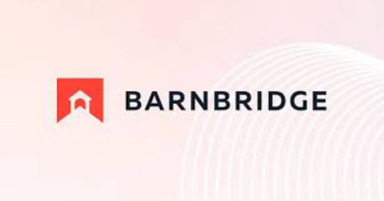
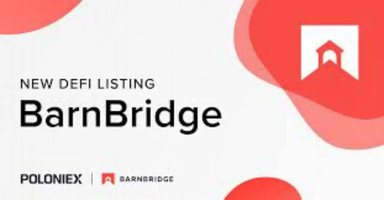
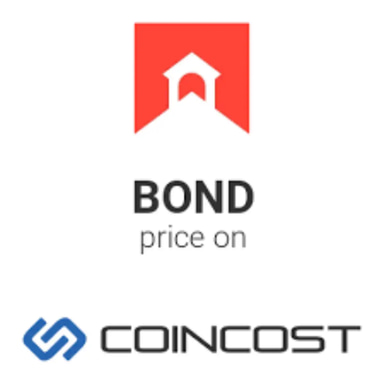
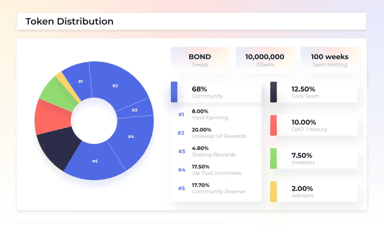
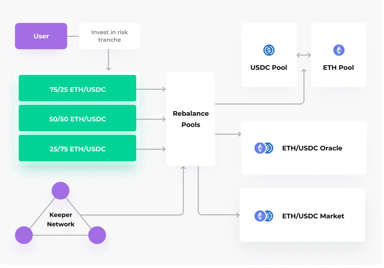
REFERENCES
[1]
[2]
[3]
[4]
[5]
[6]
[7]
[8]
[9]
[10]
[11]
[12]
[13]
[14]
[15]
[16]
[17]
